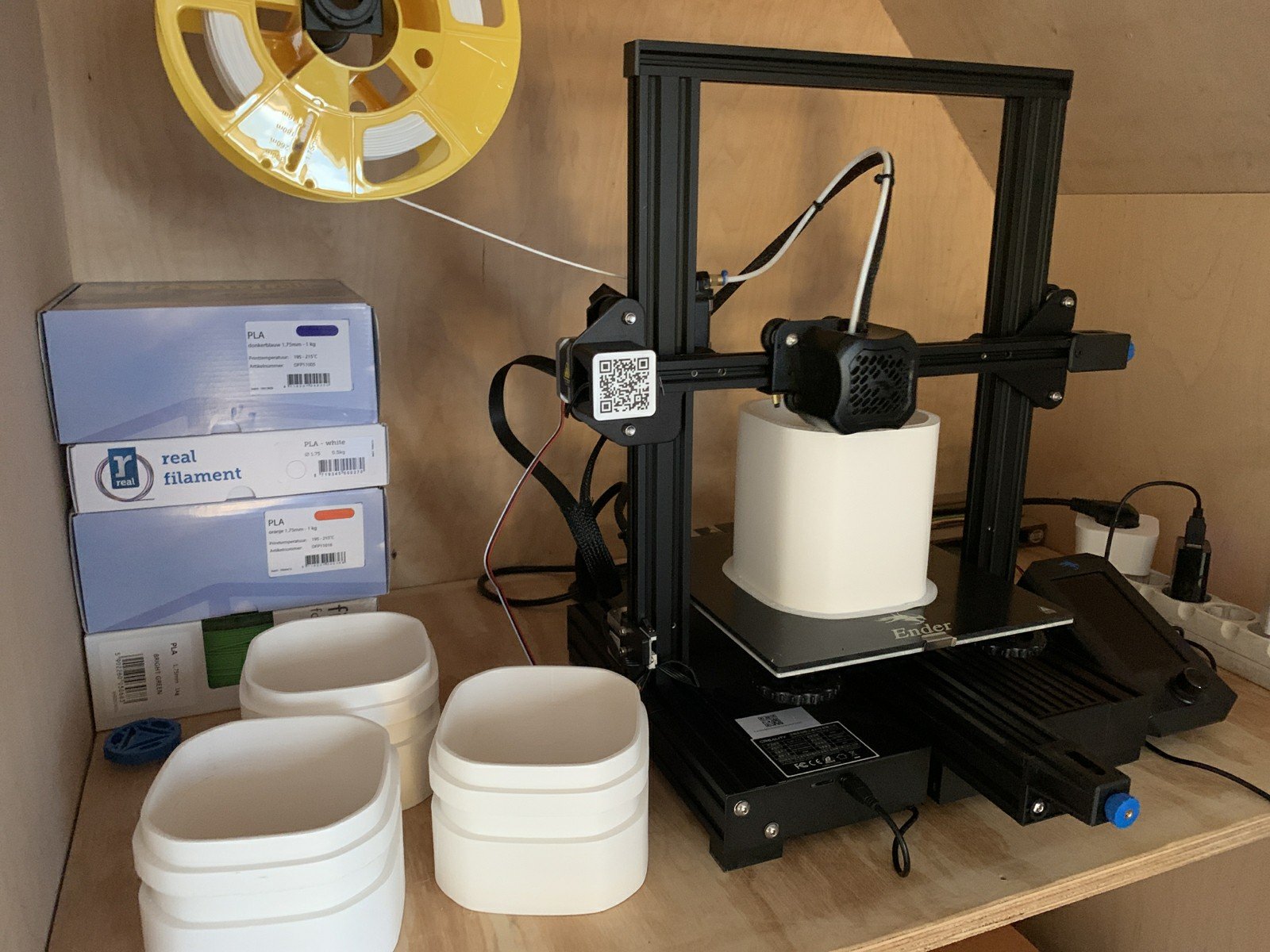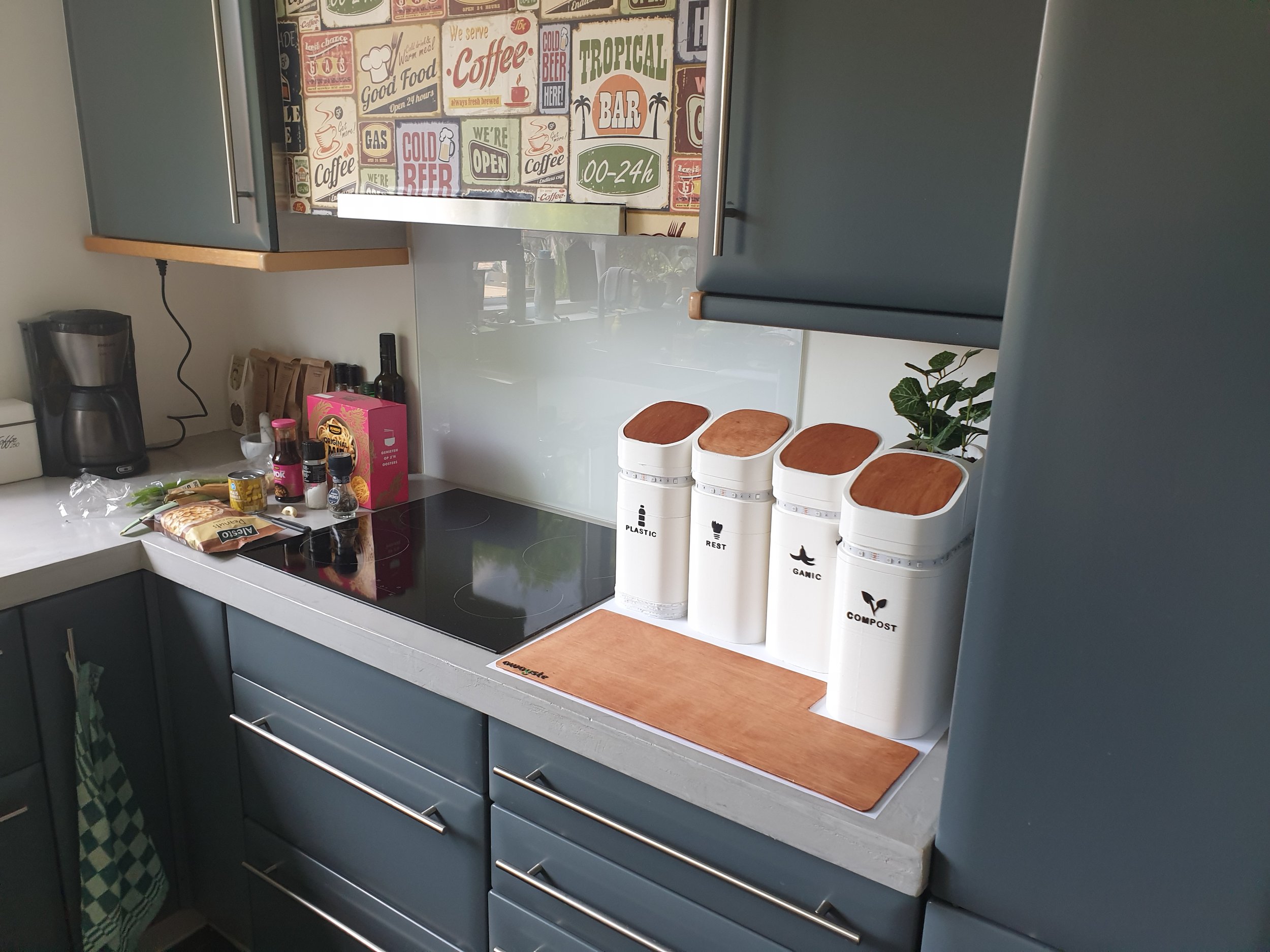Awayste
This project narrates the explorative design process of an artifact which evolves around improving the quality of waste. Specifically, how will interact with waste bins in the future? A ‘design-driven innovation’ approach has been taken, involving several experts throughout the design process. User evaluation methods used during the process include: Questionnaires, user and expert interviews, usability testing, and more.
The problem has been identified by researching a clear foundation of theory and create insight in related works. Multiple iterations and low-fidelity prototypes, resulted in the final artifact: Awayste. Awayste is a smart waste bin, which stimulates the user to actively think about sorting waste using artificial intelligence. The functionality of the artifact is an important feature, but the ability to affect the user to actively think about our waste problem is what makes this design case extra interesting. Read the full report.


















User & Society
Overall development
The expertise are of User and Society is one area where I have gained a lot of skills and knowledge. I think the user is one of the most important aspects to take into account within a design process, as stated in my professional identity. During my bachelor I utilized various user evaluation methods such as interviews, questionnaires, persona’s, user studies, customer journey maps or field research. The courses User Evaluation Methods, User Centered Design and Engineering Design, were all heavily user focused. I have also learned to look at different types of users regarding cultural differences, during the course Socio-Cultural Design,. I During my internship I have gained additional theoretical and practical knowledge about gathering direct user data in order to create products that add to the user experience. I was able to apply this knowledge within my final bachelor project.
Final Bachelor Project
The user played a big role during the development of Awayste. The problem of our waste management, which I have tried to address with my project, is aimed at our current society, our consumer society. Various user studies and interviews are used to gather valuable insights into specific design choices made during the project. For instance, the size and shape of the bins. The user was also involved in the form of experts, I contacted two experts within the department of waste and circularity of a municipality. This has provided me with valuable knowledge about how many different views there are regarding waste and how to connect these to create a product that appeals to (almost) everyone.
Customer Journey Map, User Evaluation Methods
User Study, FBP
Creativity & Aesthetics
Overall development
Within all project during my bachelor, the aesthetics were an important feature of the final prototype. The course From Idea to Design, introduced various ideation techniques to present a product. The course Exploratory Sketching has taught me how to visualize my ideas on paper in an aesthetic way. This could then be used to explore different interactions and place a design in a historical perspective during the course Aesthetics of Interaction. I started using 3D software to visualize concepts during Project 2 and kept on developing this skill until now. During my internship the aesthetics were a very important factor as I was designing products that needed to stand out from a oversaturated furniture market. My skills in 3D modelling and rendering developed greatly during this time as I used this method to communicate to the user, colleagues and manufacturers.
Final Bachelor Project
During my final bachelor project I wanted to create an appealing waste bin, without the negative association waste usually has. Hence, it was important to consider all design choices with the final aesthetics in mind. To achieve these goals I used 3D visualizations to get a realistic idea about how something was supposed to look. This resulted in me making great developments in terms of creativity and aesthetics during my internship and fbp, as can be seen in the visualization of my development on top of this page.
3D Render, FBP
Details Prototype, FBP
Business & Entrepreneurship
Overall development
At the start of my bachelor, this expertise area was not one I wanted to focus on. In my mind, a good design wasn’t expensive or successful in terms of sales, but conveyed a message about a social problem. The course Design Innovation Methods did learn me something about a SWOT analysis, business model canvas or business framework, but Business and Entrepreneurship was my least developed area until my internship. During my internship I made great improvements within this area, as shown in the hexagonal visualization. Due to my internship company being a big furniture chain with millions of customers, I got the opportunity to learn how to design for a big target group while remaining authenticity. This contributed towards my own company, where I make and sell accessories for toys such as Lego. My business Instagram account and web shop have learned me some valuable lessons and real-world experience about how to bring your products on the market.
Final Bachelor Project
The business side of Awayste was something I would have loved to research and analyze. Unfortunately I have not totally succeeded on this aspect. I have thought about how to bring a product like Awayste on the market but could not set-up a complete business plan in time. I did investigate the potential production materials, production process and how the product can be produced in a circular way, to minimize environmental impact.
Value Proposition Canvas, Project 2
Competitor Analysis, User Evaluation Methods
Technology & Realization
Overall development
For this area, the word ‘Realization’ is what I focused on most during my bachelor. I do see technology as a way to create simple and intuitive design, as stated in my professional identity, but I don’t see technology as the solution to everything. During my Bachelor, I have improved my programming skills, learned how to build low-and-high-fidelity prototypes and learned how to design, program and build electronical circuits. The courses Creative Electronics and Creative Programming helped with this development.
Final Bachelor Project
In my opinion, the technology of Awayste quite intriguing, and that has to do with Artificial Intelligence. It is remarkable how a machine can learn to identify different kinds of waste. At the end of the project I was able to train an AI to a certain extend that it could recognize all kinds of waste and showed where it should be thrown away by blinking a light. Next to designing and integrating all the required technology , I spend a large amount of time on realizing a working and aesthetically pleasing prototype. This was done with the use of 3D modelling and 3D printing most of the parts. Other parts were made out of wood using laser-cutting or precision sawing. I took extra steps to get every detail right on the prototype, such as a mechanism to automatically close the lid, hide the trash bags or make the letters and icons on the bins.
3D Printing, FBP
Lid Mechanism, FBP
Math, Data & Computing
Overall development
Math, Data and Computing is my least developed area. Maybe it has something to do with needing three years to pass the Calculus exam, but I’m not a person who likes numbers. When working with quantitative data, calculations and coding, it takes me a long time to understand everything and the results are usually still not what I’m after. I do think gathering data is an important aspect of design in the ideation and reflection phases. Historical or user data can help you identify a problem or pain points at the start of a design project. User studies or evaluations can also be beneficial when trying to improve your iterations. Validating your data and use it to make well-grounded design choices during a project is important. I learned how to deal with data during the course Data Analytics and Design<>Research.
Final Bachelor Project
During this project I have thought about how the data from the artificial intelligence is communicated to the user. This is an important part of the user experience and can make or break a design. I choose to integrate an aesthetically pleasing method of LED lights behind a diffused material to create sort of an ambient light effect. On the final demo day I used an AI model on my laptop to provide direct feedback to all the visitors about how the AI identifies the different types of waste. Developing and learning the artificial intelligence to produce relevant, reliable and valid output variables that meet the requirements of the intentions.
Artificial Intelligence Model, FBP
LED-Light Installation, FBP
Design & Research Processes
Overall development
During my bachelor I applied the methodologies learned during the course Design<>Research in multiple projects. During the courses I mostly worked within groups, which has taught me how to work towards a design, together with other designers. Planning and organizing are aspects I improved on, which my team members appreciated. Working in a team is something I enjoy, because you can share and help each other with your knowledge and skills.
Design Process, FBP










